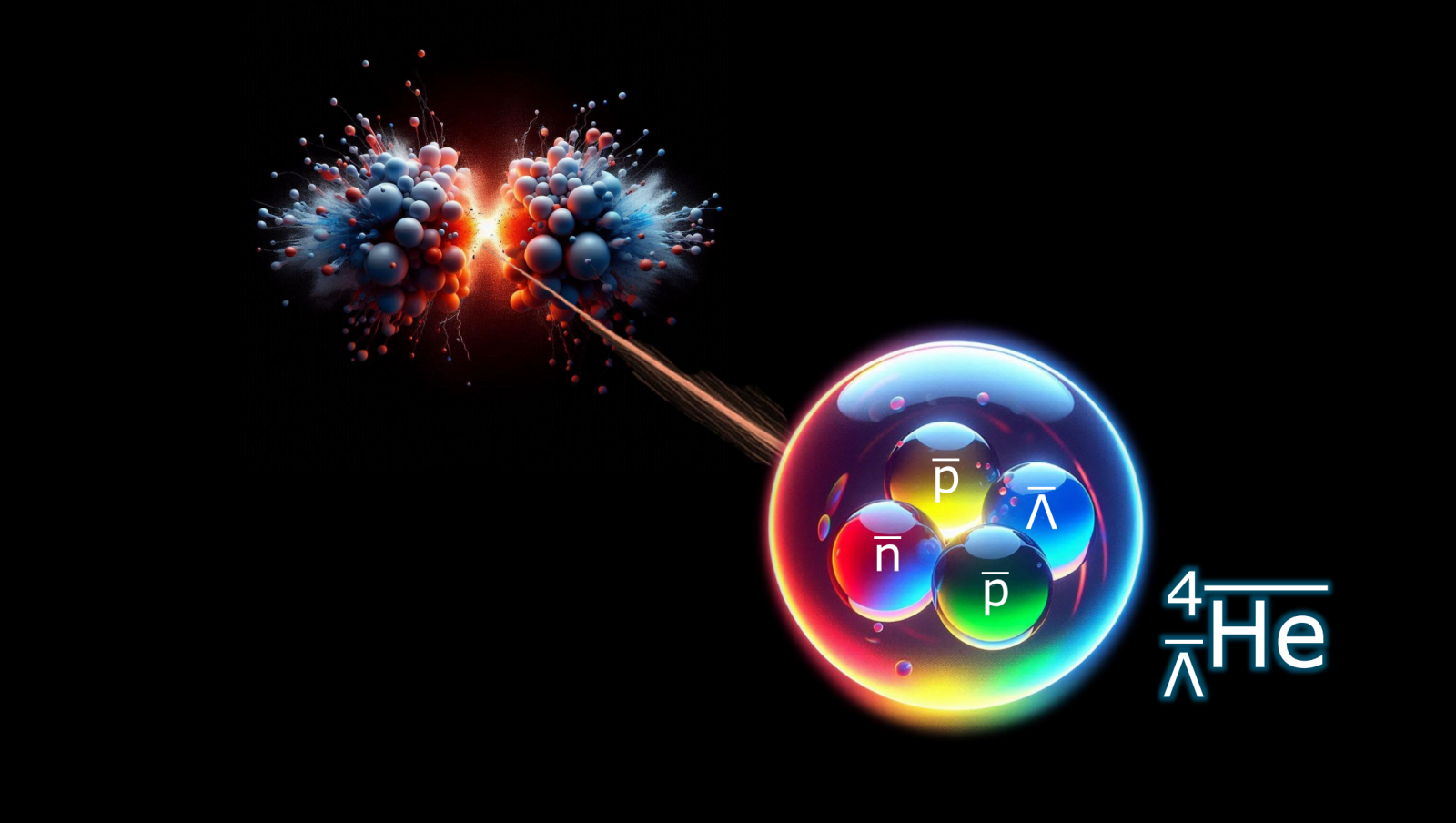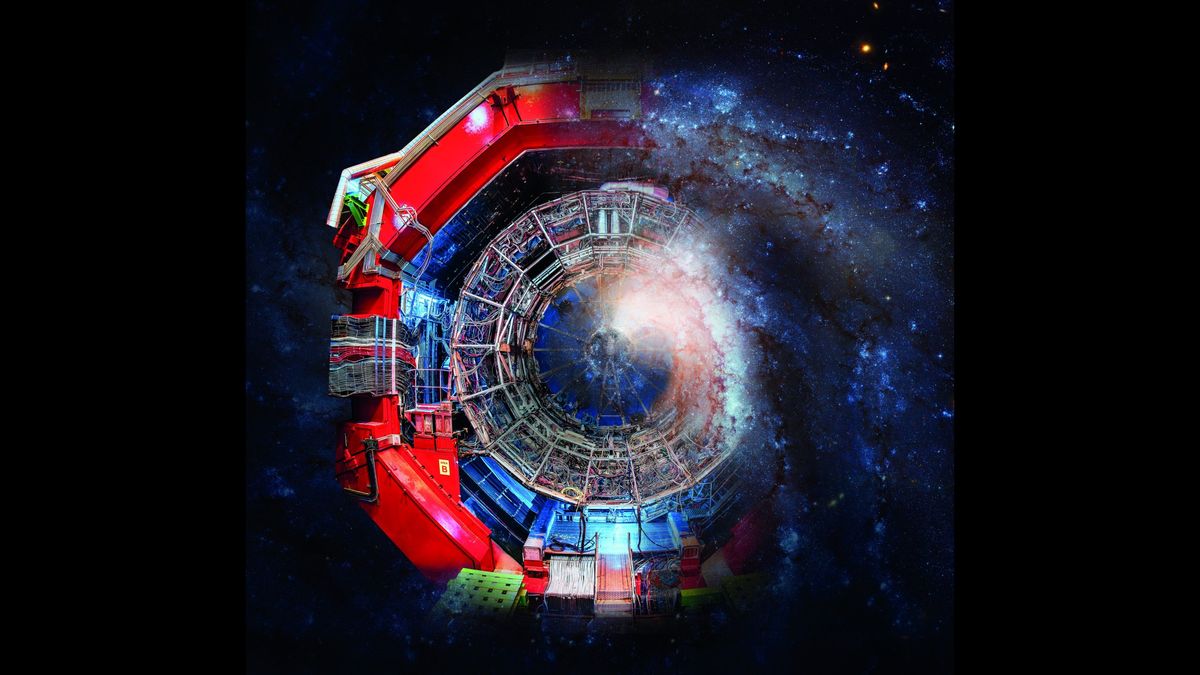Follow us on Google News (click on ☆)

Illustration of the creation of antihyperhelium-4 during a collision between two lead nuclei.
Credit: Janik Ditzel for the ALICE collaboration
This atomic nucleus, antihyperhelium-4, is the antimatter counterpart of hyperhelium-4. Its detection by the ALICE detector at the LHC could help solve one of the greatest mysteries in physics: why is the Universe dominated by matter when matter and antimatter were created in equal amounts at the time of the Big Bang?
The LHC, located near Geneva, is famous for discovering the Higgs boson, a key particle for understanding the mass of other particles. Collisions at the LHC recreate a state of matter called quark-gluon plasma, similar to what existed just after the Big Bang. It is within this plasma that hypernuclei and their antimatter counterparts form.
Hypernuclei, which contain protons, neutrons, and hyperons, are rare and complex structures. Hyperons, unlike protons and neutrons, contain so-called 'strange' quarks. These objects, although discovered decades ago in cosmic rays, remain difficult to study in the laboratory.
The ALICE collaboration detected antihyperhelium-4 by analyzing data from lead nucleus collisions dating back to 2018. This detection was made possible thanks to a machine learning technique that surpasses traditional search methods. Scientists also measured their mass, confirming the predictions of current theories.
The study of antimatter could shed light on the mystery of matter-antimatter asymmetry. The results show that matter and antimatter are produced in equal amounts in the quark-gluon plasma, deepening the enigma of the predominance of matter in the Universe.
What is quark-gluon plasma?
Quark-gluon plasma is a state of matter that existed just after the Big Bang. In this state, quarks and gluons, the fundamental constituents of protons and neutrons, are not confined within particles but form a dense and hot 'soup'.
This state is recreated in colliders like the LHC by colliding atomic nuclei at extremely high energies. These collisions allow scientists to study the properties of matter under conditions similar to those of the earliest moments of the Universe.

Illustration of antimatter particles entering the ALICE detector at the LHC.
Credit: ORIGINS Cluster/S. Kwauka
Quark-gluon plasma is crucial for understanding how quarks and gluons combined to form protons and neutrons, the building blocks of visible matter in the Universe today.
Why is antimatter so rare?
Antimatter is the opposite of matter, with particles having opposite electric charges. For example, the antiproton has a negative charge, unlike the proton which is positive.
According to current theories, matter and antimatter were produced in equal amounts during the Big Bang. However, a tiny asymmetry led to the predominance of matter. The exact reasons for this asymmetry remain one of the greatest mysteries in physics.
The study of antimatter, such as antihyperhelium-4, could provide clues about this asymmetry. By understanding how and why antimatter disappeared, scientists hope to uncover the secrets of the earliest moments of the Universe.